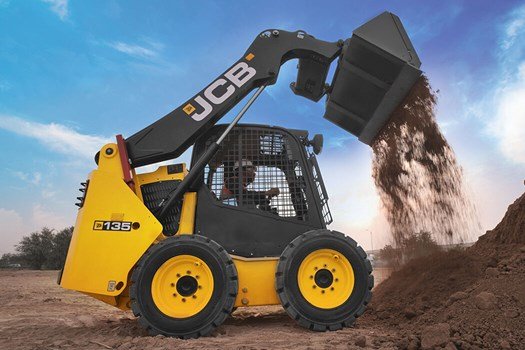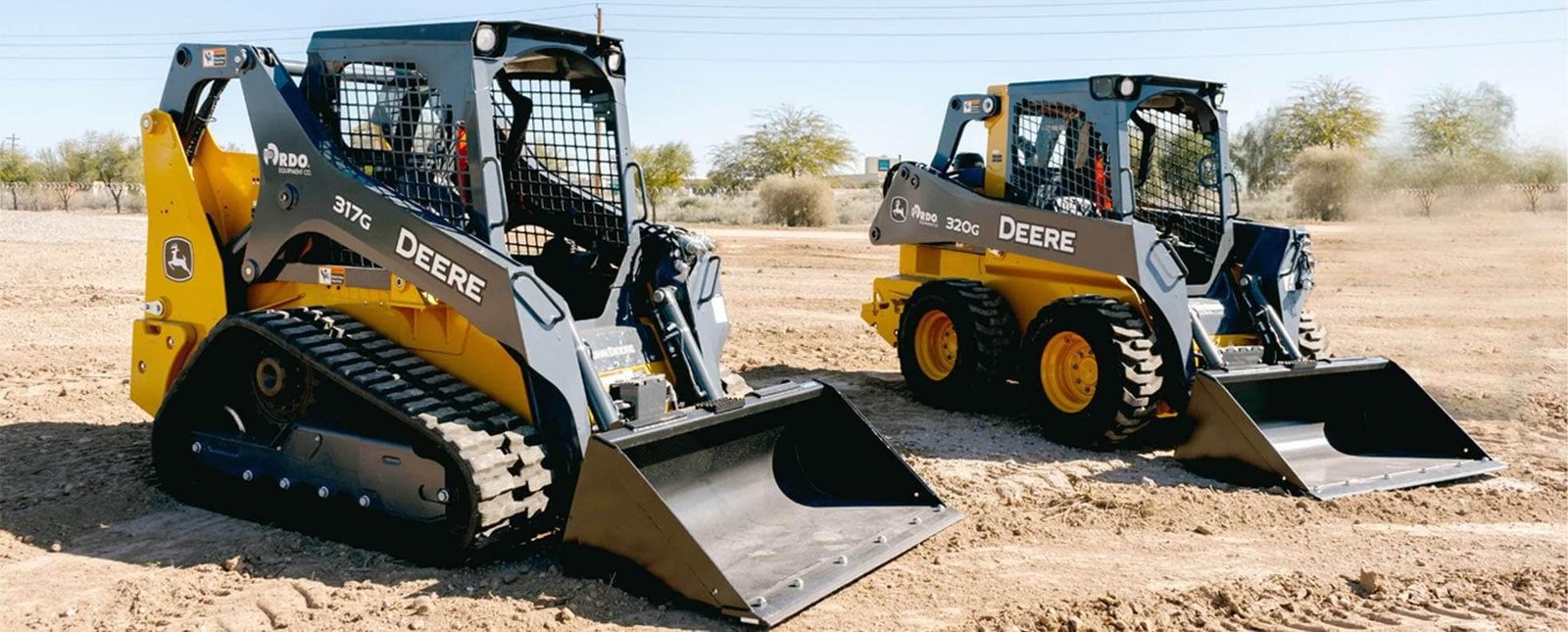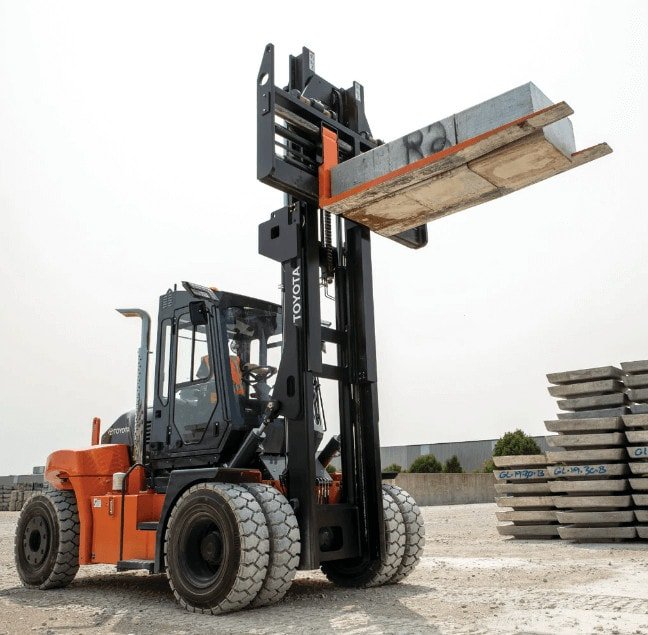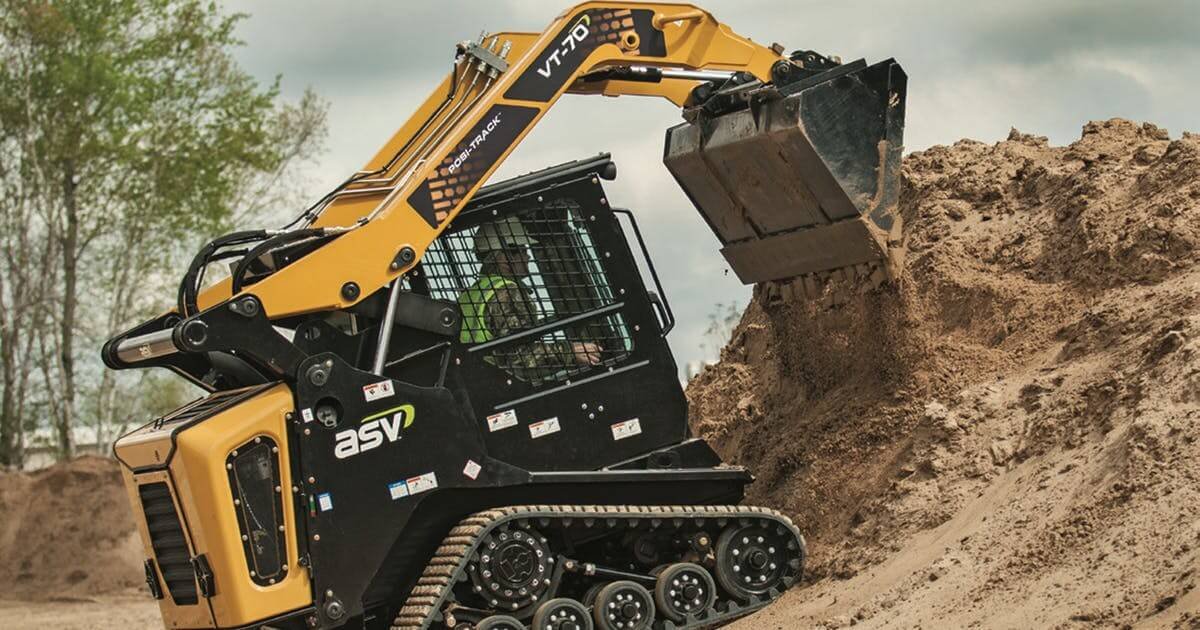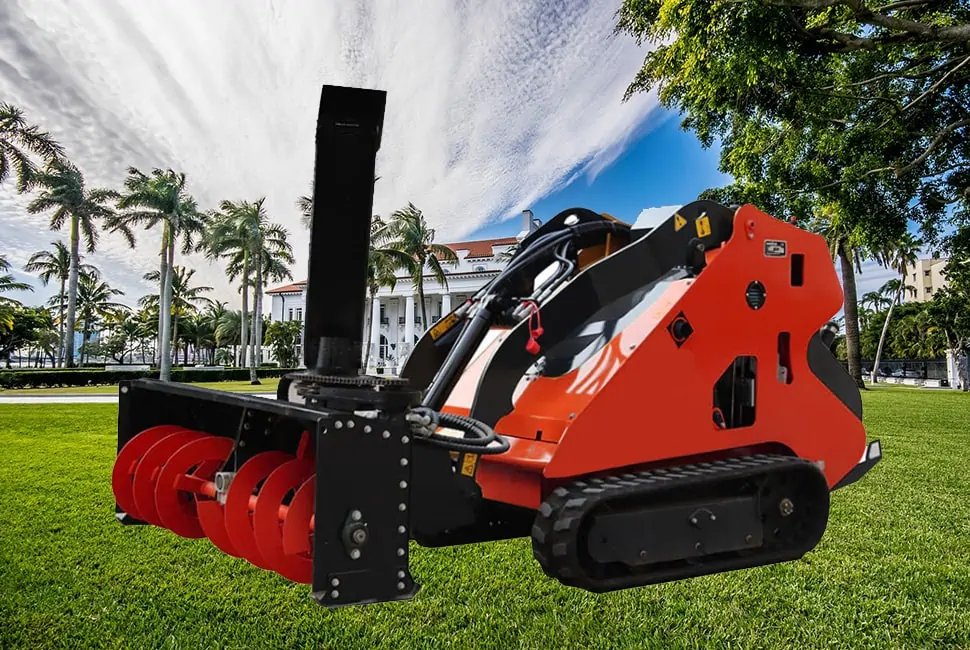Introduction
Welcome to this blog post; you’ll learn about the differences between a skid steer loader and a forklift. If you work in the construction or warehousing industry, you must understand the different types of equipment available and their specific uses.
Skid steer loaders are versatile machines for various tasks, including construction, landscaping, and farming. They are known for their small size, agility, and ability to operate in tight spaces. In contrast, forklifts are commonly used in warehouses, distribution centres, and manufacturing plants for lifting and moving heavy loads. They are known for their manoeuvrability and lifting capacity.
While the skid steer loader and a forklift have similarities, they also have differences in size, manoeuvrability, lifting capacity, and primary uses. By understanding these, you can choose the best one for the job. So let’s dive in and learn more about a skid steer loader and a forklift!
Skid Steer Loaders
If you work in construction, farming, or landscaping, you may already be familiar with skid steer loaders. These versatile machines are known for their small size, agility, and ability to operate in tight spaces. In this blog post, we will explore the features and uses of skid steer loaders in more detail.
First, look at what is a skid steer loader and how it works. A skid steer loader is a compact machine with four wheels or tracks that can move in any direction. It has a small cab for the operator and a hydraulic arm that can attach various tools, such as a bucket, grapple, or drill. The operator can control the machine and the attachment using joysticks and foot pedals.
Uses Of Skid Steer Loaders
- Construction: One of the primary uses of skid steer loaders is building construction. They are commonly used for grading, digging, and hauling materials on job sites. Their small size and manoeuvrability make them ideal for working in tight spaces, such as inside buildings or in urban areas.
- Landscaping: Skid steer loaders can also be used for landscaping tasks, such as moving dirt or gravel, clearing snow, or removing tree stumps.
- Agriculture: Everyday use of skid steer loaders is in agriculture. They can be used for tasks such as baling hay, moving feed or grain, and cleaning stalls. Skid steer loaders are also helpful for maintaining roads and trails on a farm.
Features Of Skid Steer Loaders
- Versatility: One of the critical features of skid steer loaders is their ability to operate with different attachments. A skid steer loader can be fitted with various tools, such as a bucket, pallet forks, auger, or trencher, making them highly versatile. Versatility means that a skid steer loader is helpful for multiple tasks, which can save time and money on the job site.
- Portable: Most known advantage of skid steer loaders is their easy transport. They can be loaded onto a trailer and transported to a job site using a pickup truck or larger vehicle.
Skid steer loaders are versatile machines allowing them for various tasks. They are commonly used in construction, farming, and landscaping due to their small size, agility, and ability to operate in tight spaces. Their ability to manage with different attachments makes them highly versatile, and their easy transportability makes them ideal for smaller contractors. If you are looking for a machine that can perform multiple tasks on a job site, then a skid steer loader may be the right choice.
Forklifts
Forklifts are essential machines in the warehousing, manufacturing, and logistics industries. These machines are used for lifting and moving heavy loads, such as pallets of goods or raw materials. In this blog post, we will explore the features and uses of forklifts in more detail.
First, let’s look at a forklift and how it works. A forklift is a machine with a cab for the operator and two forks that can lift and move heavy loads. The forklift uses hydraulic power to raise, and lower loads and the operator can control the machine using steering wheels, pedals, and levers.
Uses Of Forklifts
One of the primary uses of forklifts is in warehousing and distribution centres. They are commonly used for moving pallets of goods from one location to another, loading and unloading trucks, and stacking goods on shelves. Forklifts can also be used in manufacturing plants for moving raw materials or finished products.
Features Of Forklifts
- Lifting capacity: One of the most beneficial advantages of forklifts is their lifting capacity. Depending on the size and model of the forklift, they can lift anywhere from a few hundred pounds to several tons. Lifting makes them ideal for lifting and moving heavy loads that would be difficult or impossible to move by hand.
- Manoeuvrability: Forklifts are also known for their manoeuvrability. They can turn in tight spaces and navigate narrow aisles, making them ideal for working in warehouses or manufacturing plants with limited space. Forklifts can also be equipped with different tires, such as a cushion or pneumatic tires, depending on the surface they will operate on.
- Versatility: One of the critical features of forklifts is their ability to operate with different attachments depending on the job specifics. Forklifts can be fitted with various extensions, such as a side shifter or fork positioner task at hand. Versatility means that a forklift can perform multiple tasks, saving time and money on the job site.
- Variety in forklifts: Forklifts come in various sizes and models, ranging from small electric to large diesel-powered forklifts. Different types mean a forklift suits any job site, from a small warehouse to a large manufacturing plant.
Forklifts are essential machines for warehousing, manufacturing, and logistics industries. They are commonly used for lifting and moving heavy loads and are known for their manoeuvrability, lifting capacity, and versatility. Their ability to operate with different attachments and come in various sizes and models make them ideal for any job, whether it’s a small warehouse or a large manufacturing plant. A forklift is an essential machine in your arsenal if you work in the warehousing, manufacturing, or logistics industry. Next are the differences in our menu between a skid steer loader and a forklift.
Differences between The Skid Steer Loader and A Forklift
When it comes to heavy equipment, skid steer loaders, and forklifts are two machines that are commonly used in different industries. The skid steer loader and a forklift can lift and move heavy loads; they have various features and uses. This blog post will explore the differences between a skid steer loader and a forklift.
- Design: The design is the primary difference between the skid steer loader and a forklift. Skid steer loaders are designed with four wheels and a small body, making them highly manoeuvrable and suitable for working in tight spaces. On the other hand, forklifts have a larger body and are typically designed with three or four wheels, making them ideal for moving heavy loads over longer distances.
- Attachments: the skid steer loader and a forklift differ in how they lift and move loads. Skid steer loaders use a bucket or attachment to scoop and transport loads, whereas forklifts use two forks to lift and move loads. Skid steer loaders are better suited for digging, grading, and material handling, while forklifts are better suited for moving pallets of goods or raw materials.
- Lift capacity: The lifting capacity is another factor differentiating the skid steer loader and a forklift. Skid steer loaders typically have a lower lifting capacity than forklifts, making them better suited for smaller loads. On the other hand, forklifts can lift heavier loads, making them better suited for larger loads or loads that need to be stacked on high shelves.
- Operating environment: The operating environment is another factor that distinguishes the skid steer loader and a forklift. Skid steer loaders are typically used in outdoor environments, such as construction sites, landscaping projects, or agricultural fields. They are designed to operate on uneven terrain and can be fitted with different types of tires depending on the surface they will be working on. On the other hand, forklifts are designed for indoor environments, such as warehouses and manufacturing plants, and are typically equipped with a cushion or pneumatic tires.
- Maintenance: Maintenance is another factor to consider when comparing the skid steer loader and a forklift. To ensure functionality, skid steer loaders require regular maintenance, such as oil changes and filter replacements. On the other hand, forklifts require more frequent maintenance, such as regular inspections and safety checks, due to their heavier lifting capacity and use in industrial settings.
The skid steer loader and a forklift are machines designed for various tasks and environments. Skid steer loaders are highly manoeuvrable and suitable for outdoor environments, while forklifts are designed for indoor environments with higher lifting capacity. Understanding the differences between these two machines can help you choose the right one from the skid steer loader and a forklift for your specific needs and ensure that your job is completed safely and efficiently.
Conclusion
So, you’ve reached the end of our discussion on the differences between the skid steer loader and a forklift. We hope you found this information helpful in deciding which equipment to use for your needs.
A skid steer loader is a compact machine that is highly manoeuvrable and excels in tight spaces. It is often used for digging, pushing, and grading tasks, but it can also be outfitted with various attachments to perform other jobs.
On the other hand, a forklift is a larger, more specialised piece of equipment designed primarily for lifting and moving heavy loads. It typically has a higher lifting capacity than a skid steer loader and is more suited for indoor applications.
Ultimately, choosing between a skid steer loader and a forklift will depend on your unique needs and the specific tasks you need to accomplish. We encourage you to carefully consider your options and choose the best equipment to meet your requirements.


